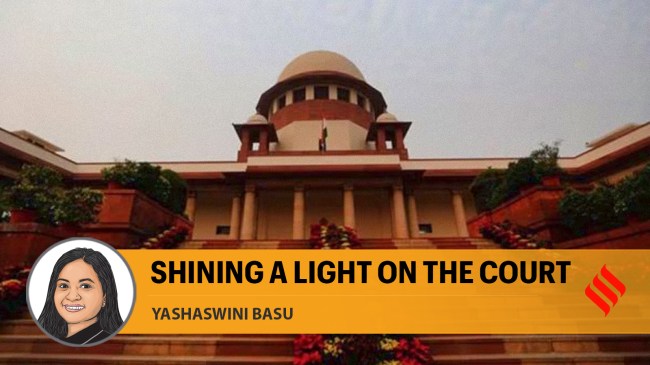Opinion SC judges declaring assets is welcome. But it is not enough
These details, otherwise, could have also been obtained through Right to Information since the days of the Veeraswamy judgement (reiterated by a 2019 order of the Supreme Court). It said that judge of any court is a ‘public servant’
 The threshold of actions against a sitting judge remains high
The threshold of actions against a sitting judge remains high The public declaration of the assets of 21 Supreme Court judges needs to be lauded as a testament to Chief Justice of India Sanjiv Khanna’s commitment to embolden transparency and accountability. This step seems to be a timely attempt to address the increasing dismay over allegations of corruption in the judiciary.
The Bench remains one of the most hallowed seats of power in the country. Yet, many times, allegations of corruption mar their image. Former Chief Justice Ranjan Gogoi once remarked, “Judges don’t drop from heaven”, and to err is human. Then, how is it possible that no sitting judge has ever been impeached or convicted? The answer lies in the opaque design of the prosecution mechanisms when it comes to judicial officers.
The release of the asset details comes in the wake of the discovery of unaccounted cash at a Delhi High Court judge’s residence. But it barely covers the critical issues around judicial accountability. Notably, the release of assets is not a novel practice. In 2009, the Supreme Court passed a resolution endorsing the publication of the assets of judges. However, it was voluntary. The portal for uploading these details has remained dormant ever since.
While judges enjoy enough immunity, they are not totally shielded from accountability. The Judicial Officers Protection Act, 1850 states that no judicial officer will be subject to a trial before any civil court, for any act done in their judicial capacity, if done in good faith. Similarly, the Judges (Protection) Act, 1985 states that no court can entertain any civil or criminal proceedings against any judge in India for any accusation pertaining to their judicial duty. However, this is not absolute in nature because the Act also states that this does not debar any lawful authority from initiating action against someone, if the charge relates to them as “individuals” and goes beyond their adjudicatory or administrative role.
Further, in the 1991 Supreme Court verdict in the case of K Veeraswamy vs Union of India, the apex court established that no criminal proceedings against a judge of the Supreme Court or a high court will be registered without consulting the Chief Justice of India.
The Constitution, under Article(s) 124 and 218, establishes the process of removal of judges on the grounds of “proven misconduct or incapacity”. This entails a motion passed by both Houses of Parliament with a special majority, which sets a high threshold for impeachment. Whenever an inquiry is initiated against a judge, an internal committee led by the CJI or the relevant high court oversees the matter and decides as appropriate. The outcome, however, is not made public, and the general compass of the punitive measures extends to transfers, resignations or non-assignment of judicial work.
The idea behind such immunity is to protect judicial officers from malicious litigation or assault on their independence. But the pitfall is that most of the time, the genuine instances of misbehaviour and corruption remain untouched.
Judges all around the world enjoy some degree of immunity. But, they are not insulated from civil or criminal prosecution. The US, Argentina, South Korea and Russia are among the countries that have made it mandatory for judges to declare their assets. Canada and the United Kingdom, like India, have non-mandatory declaration systems: The details are made public only when asked for. While the US, UK and Germany have special legal procedures to try judges, Canada has a Judicial Council which exclusively deals with legal action against them.
The push for financial disclosure is also endorsed by international standards like the Bangalore Principle of Judicial Conduct, which not only asks the judges to declare their wealth but also urges them to declare any conflict of interest that might affect their judicial integrity during trials.
The financial disclosure, though, is a critical step towards embracing transparency; it is just the tip of the iceberg. These details, otherwise, could have been obtained through Right to Information since the days of the Veeraswamy judgement (reiterated by a 2019 order of the Supreme Court). It said that the judge of any court is a “public servant”. However, there is still no clarity over whether a judge can be tried under the Lokpal Act. The threshold of actions against a sitting judge also remains high. So, while the recent disclosures are a welcome gesture, judicial accountability needs more.
The writer is outreach lead at Nyaaya, an initiative of Vidhi Centre for Legal Policy





